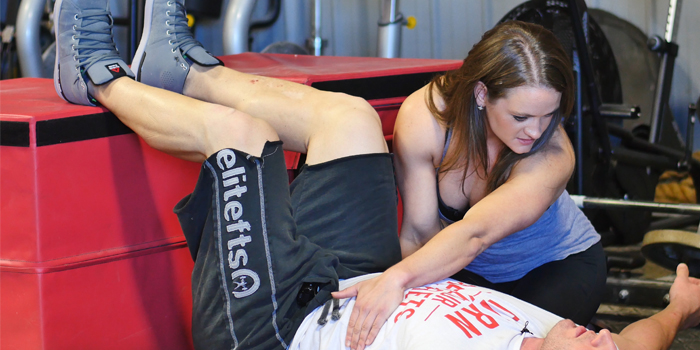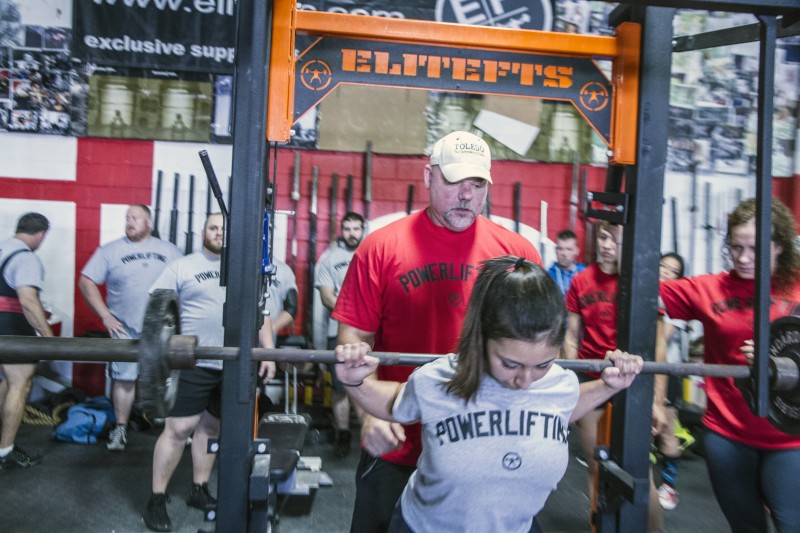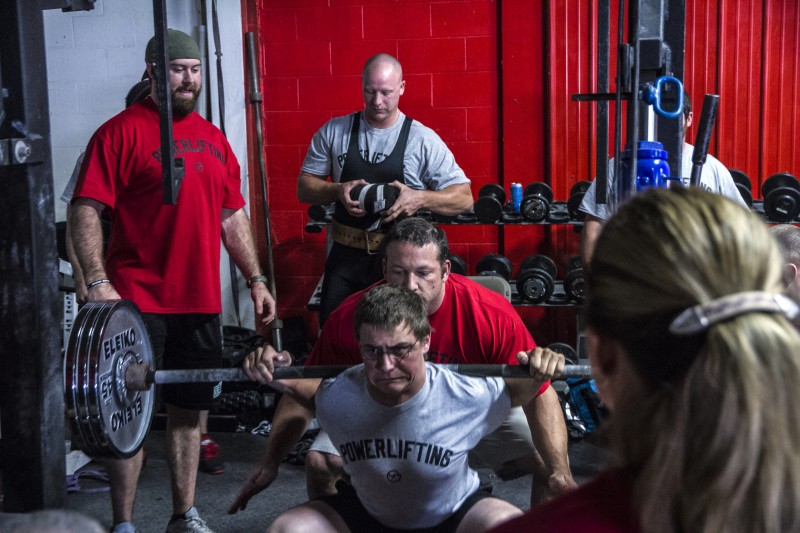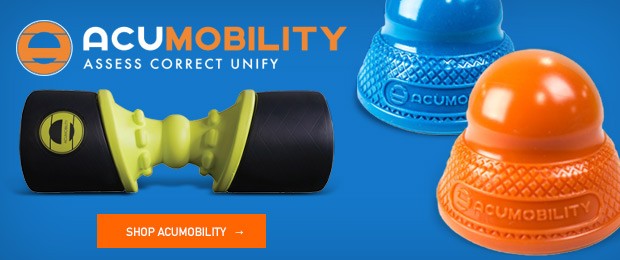
There was a recent question on the Q&A (which is where a lot of us get our article content ideas from, so ask there if something comes up!) regarding groin pain in the hole of his squat. Most times I hear or read someone say they have pain at a certain point in a movement (which is good information and way better than the overly-generic statement that it hurts when you squat), I automatically revert to saying, “I need to see it before I can help.”
I started thinking, “Well, I can make some videos of some assessments and exercises, but there are about half a dozen other PT’s that have done those assessments and exercises already.” I could write more about a cam or pincer-type impingement, how you should minimize positions that stress that, and talk about how we’re all made to squat a little differently based on structure. I can video some self-performed release techniques and call it good. And honestly, those are great solutions and may be a component of what someone needs right now. Send me a message and I’ll likely point you in that direction if I don’t feel you need more detailed assessment, but all of that is well-covered. There is so, so much information out there. Some of it gets recycled more frequently, and for a good reason.
WATCH: Anterior Pelvic Tilt Compilation Series — Dani Overcash and Casey Williams
But it almost always feels like something’s missing to me. I’m one of those people that always needs to figure out the next “why.” If someone gives me an overly-simple solution, for some reason it pushes my buttons, likely because there’s something in me that knows it’ll help to some degree but not address why the issue arose, to begin with. I always want more. I don’t want to just know what to do (although, yes, I’ll take that) but I want to understand why what I'm doing is the solution, to begin with.
I want to teach you to fish.
Out of curiosity, I Googled "hip pain at bottom of squat” to see what information I’d be getting if I had asked the question. The results left hypothetical me a little confused on what I really should be doing. Is my pain pinching, or something different? Does it click when I do certain movements? Is it muscular? Is it my hip flexor or adductor? Do I need to stretch, or "activate’" a muscle? What the heck is my TFL doing, and is that what it should be doing? Is it because of my buttwink? Wait — is buttwink an actual thing or not?
And in general, the response to “hip pain and squatting” falls into a few categories/solutions via Google:
1. Impingement
Do some glute activation, some band distraction, and modify training until it gets better.
I don’t like but also don’t hate this solution. I’m not really sure how I feel about a blanket statement for banded mobilizations yet, honestly.
2. Muscle Strain (Adductor/Hip Flexor)
Stretch/roll the crap out of it, put a heavy kettlebell on it, and hope it relaxes instead of generating more neurogenic tension and guarding or creating more instability.
Can I get a little glute work and reciprocity for stability here?
3. Change Technique
Change stance, mostly, and mobilize other segments. Put your joint in a position where there’s less biomechanical demand in directions that are aggressive on the hip joint. Make sure everything else is moving like it should.
(Cool, I can dig this one.)
4. Train Glutes
Seriously, I don’t know a single person who has ever had "excessively strong" glutes. Those people don’t get injured, but most people who NEED to train glutes end up recruiting high hamstring or lumbar extensors when left undirected.
Generally, it seems there’s a lot of “do this” going on, without teaching you when to apply it, or when there’s a better solution. There are a lot of people still telling you to “stretch” a long and weak hip flexor or “tight” adductor. It’s not that I’m against stretching an adductor, foam rolling, or any of these things, but putting out more of that content probably isn’t all that helpful.
Just to get you thinking, looking at all of these solutions, most of them talk only about ball-in-socket motion. Never, not once, do they mention stabilizing the socket over the ball. And not once do any of them talk about the fact that, at any point in time, our neuromuscular system is seeking stability to keep us upright against gravity.
Don’t Lose That Bigger Picture
That is the overly simplified summary of the primary demand on our joints and surrounding musculature: mobility and uprightness against gravity. And the whole "upright against gravity" thing is so, so heavily modulated by small changes detected by the nervous system and receptors present in joints and muscles that detect change and send information to the brain. Some schools of thought will go so far as to say that your body will impinge in order to find a reference center for stability.
Honestly—and I may be crucified for this later, or completely change my stance in the next six months—in some cases, I can buy that. With the demand we put on our body during training and competing, we ask for the extreme neurologically, even if not positionally. The more time we spend in that position, the more our “under the bar” position becomes neurologically normalized, and our baseline for postural “keep me up against gravity” trends that direction and habituates. That makes it hard to feel certain landmarks that keep us truly grounded — heels and midfoot, for example. So where the heck are we in space to grant us stability?
Brain: “I can’t feel much because my center of gravity is so awkwardly adapted. Let me impinge on my hip, especially if the bones are oriented in such a way that it may damage soft tissue (hello, cam/pincer impingement). It gives me concrete information on where I am in space for stability. From there, I can tell what’s up proprioceptively and keep you up against gravity.”
Right, so pain in the hole while you’re squatting. Hang with me – I’m going somewhere with all this. The biggest thing I ever hope to give my athletes isn’t one solution, but an understanding of their body’s functions and why certain solutions presented on Google may be applicable to them, or not, because they may not have a pocket-PT to help sort through it.
The more they understand about how their body moves and the mechanics of what’s going on, the easier it is for them to sort through how they can remedy it, train around it, and keep getting better without me. I so badly hope for you to have sound reasoning why you choose one Google solution over another, or better yet have enough foundational knowledge to develop a simple solution yourself, so you stop having to waste your time wondering what to do.
It is no secret that a lot of my background comes from PRI, but drop the label and watch this video to understand tri-planar functional anatomy.
Coming back to the original topic of hip pain in the hole of a squat: theoretical considerations aside, whether its impingement, muscular, or something totally different altogether, I do want to know why certain tissues are stressed. And I do have general considerations based on both femoral-acetabular (FA) and acetabular-femoral (AF) mechanics.
1. Use the 90-90 hip lift.
If you have hip pain in some capacity or another, this is a great starting point. The movement demonstrates how important your hamstrings are in anchoring your pelvis based on positional changes.
2. Given powerlifters tend to love our adductors, look to inhibit rather than stretch, especially on the right.
Our adductors both flex and can internally rotate the hip via FA or AF motion, and train external rotation and extension. Glutes and lateral hamstrings balance tone for improved stability.
3. Do not neglect your anchor.
All this talk about the pelvis is great, but training your abs with your pelvis in the proper position will help you retain position (and thus contribute to decreased hip pain if it was positionally-based) under load. In particular, if that right adductor is chronically “on” or tight, facilitating left abs is a helpful step in actually giving your right glute an anchor. Control your frontal plane before transverse. Given that we tend to extend bilaterally, it’s hard to go wrong with appropriate core work on both sides. Mike Robertson and Bill Hartman are my favorite resources for truly effective core training drills. If I ever make it out to IFAST, I may kiss the floor.
4. Glutes. Glutes, glutes, glutes, all day long.
Glutes are important in both extension and abduction, to reciprocally inhibit or permit proper stabilization and tone levels throughout pelvic musculature to set the position of the hip joint. Remember, glutes aren’t JUST hip extensors — they’ll stabilize a pelvis!
5. Single-leg stability work goes a long way in teaching the receptors that tell your brain where you are in space to provide appropriate information.
This affects your ability to do so under heavy weight and meet that demand appropriately with significant value. This is the kind of training that feels like pointless fluff work unless you slow down and feel proprioceptively what you want to with controlled and intentional motion.
Again, I hate getting too far down that rabbit hole, but I cannot write and hope to help without being intellectually honest with you. There are already 6000 solutions available to you on the internet and honestly, some of them are pretty damn good and offer a much more creative treatment plan overall than I would write. Knowing how to pick the right one is key. And the biggest key to you not needing me is a basic, but decent, understanding of tri-planar motion and appreciation for when and why your pain occurs and how your body operates together.













https://donny-mateaki.clickfunnels.com/how-to-eliminate2